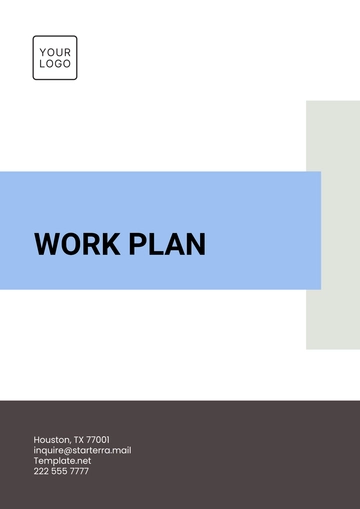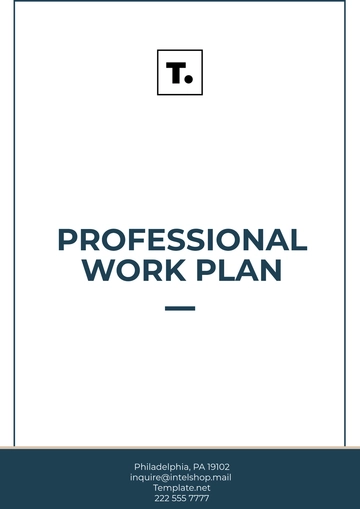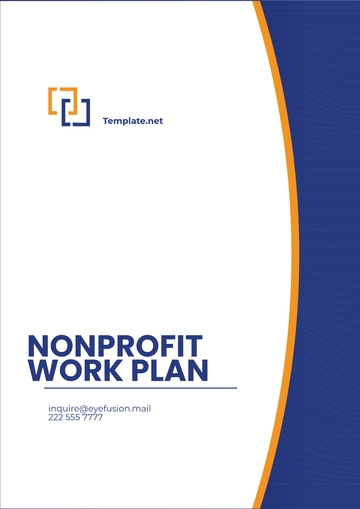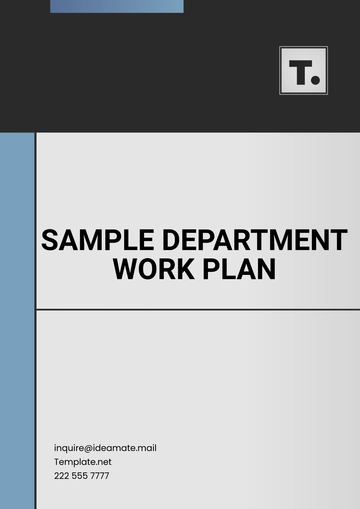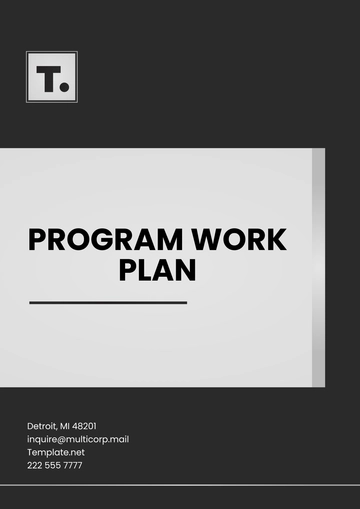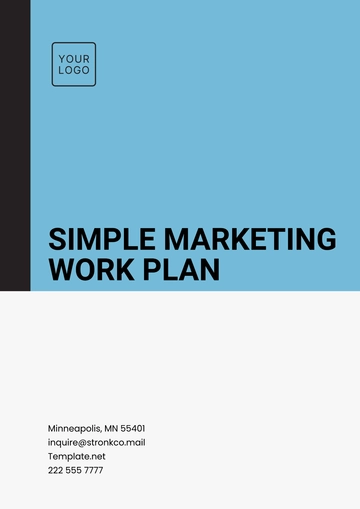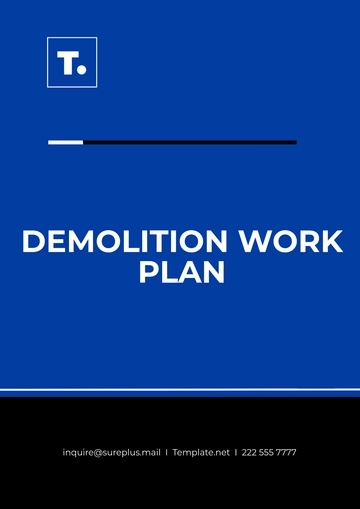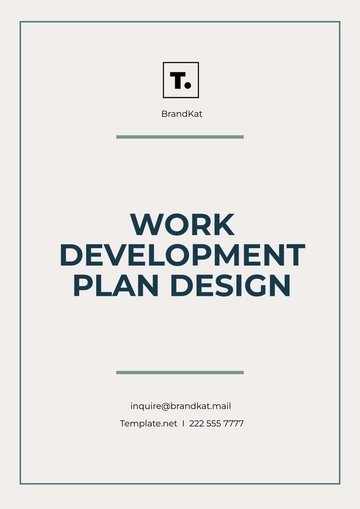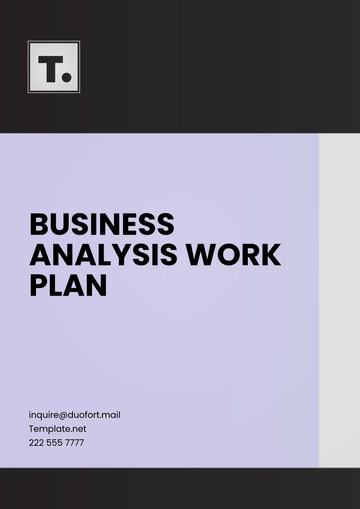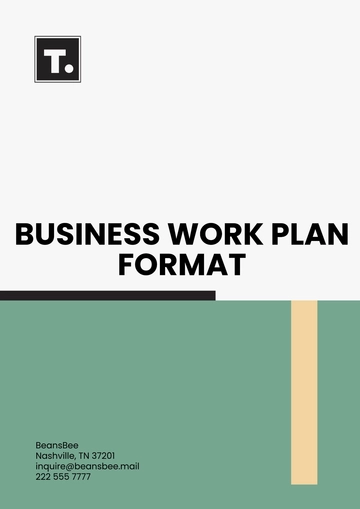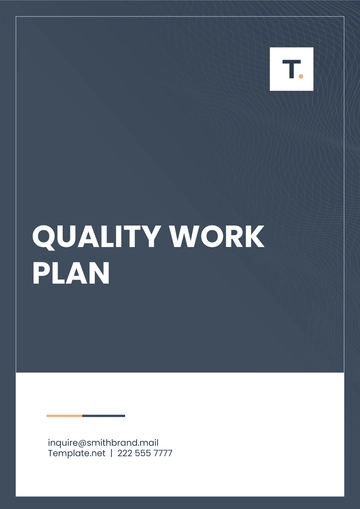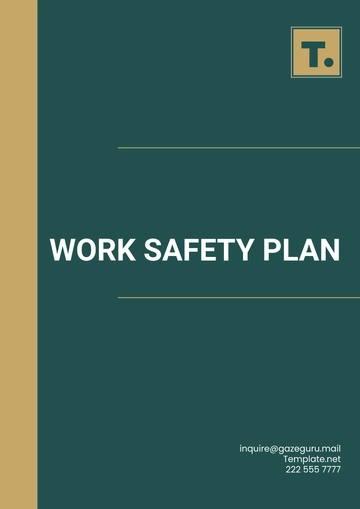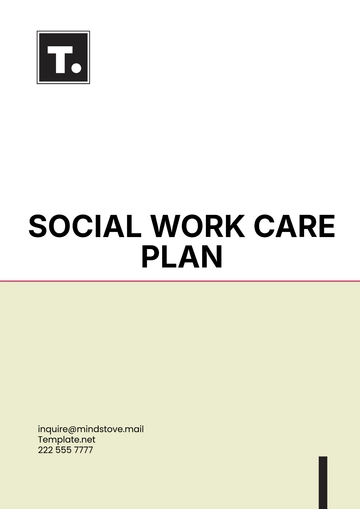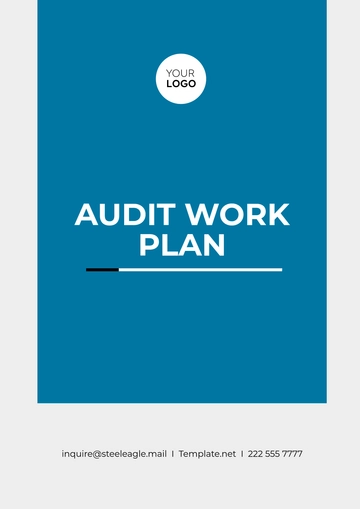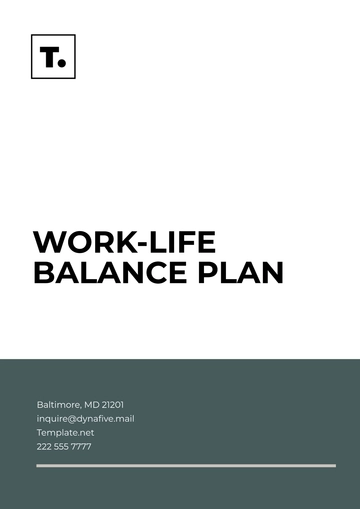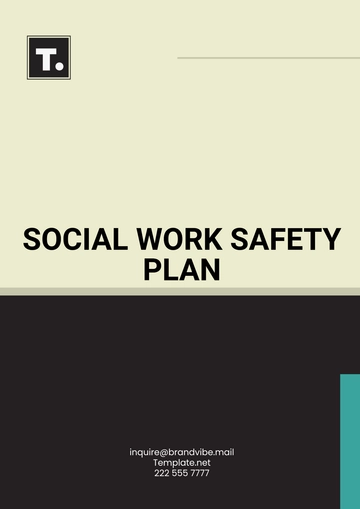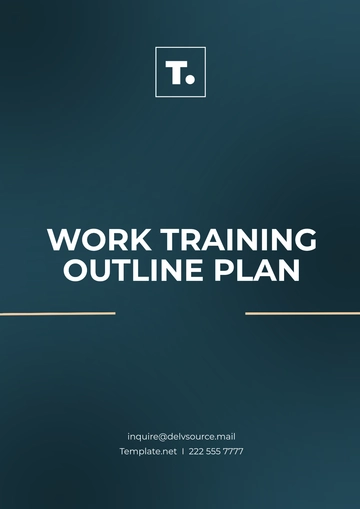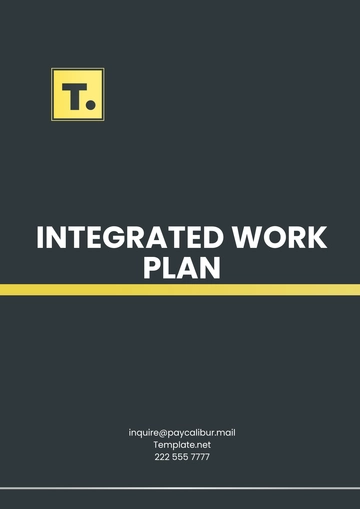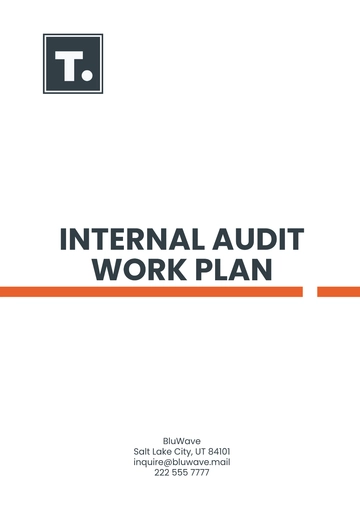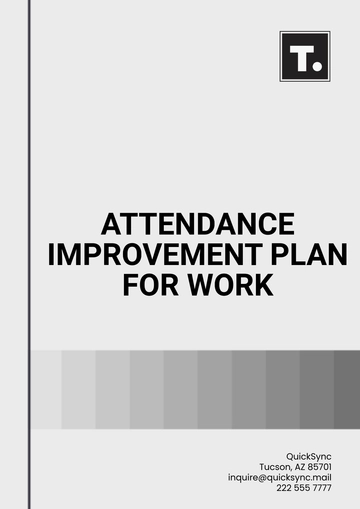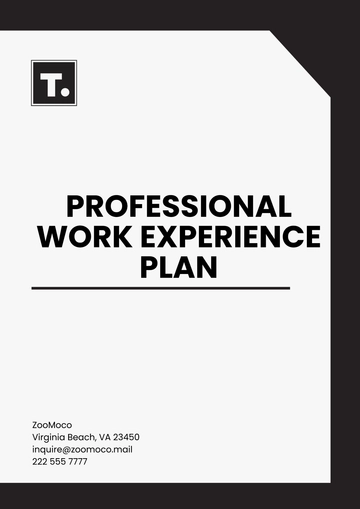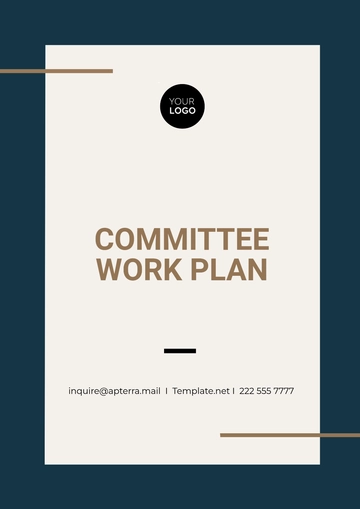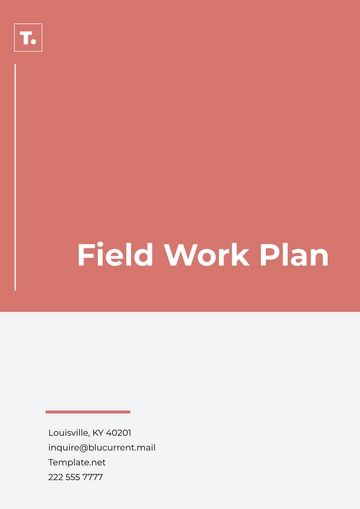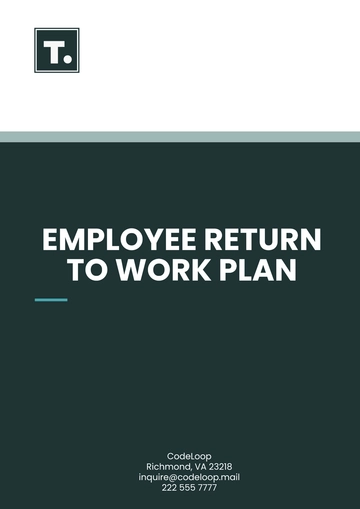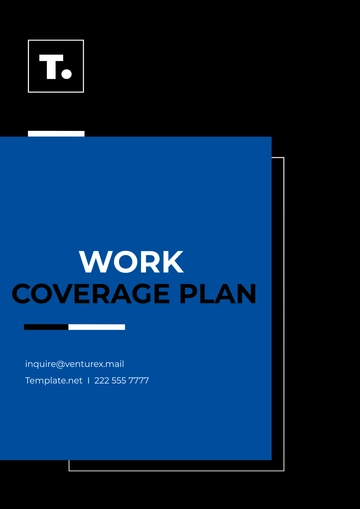Free Nonprofit Work Plan
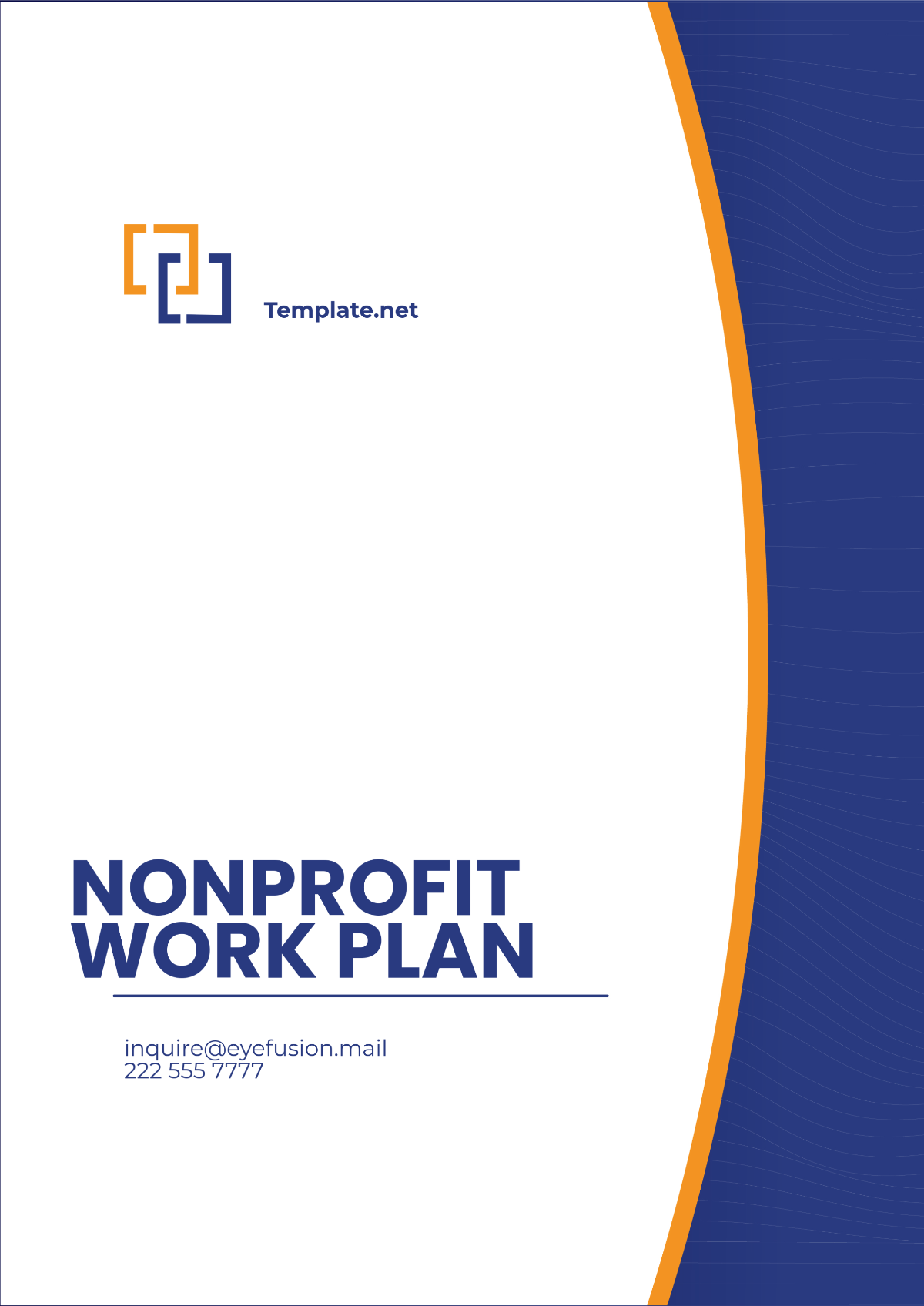
Name: | [YOUR NAME] |
Company: | [YOUR COMPANY NAME] |
Department: | [YOUR DEPARTMENT] |
Date: | [DATE] |
I. Executive Summary
The Executive Summary provides a concise overview of the entire work plan, including the organization's goals, key tasks, timelines, and resource requirements. It serves as a snapshot of the plan for stakeholders to quickly understand the organization's strategic direction and objectives.
Organization Name: [Your Company Name]
Work Plan Duration: January 1, 2050, to December 31, 2050
Primary Objectives:
Increase community outreach by 20%
Launch three new fundraising campaigns
Enhance volunteer engagement and retention
Key Deliverables:
Outreach report with measurable impact
Successful execution of three fundraising events
Volunteer Satisfaction Survey results
II. Strategic Objectives
In this section, outline the overarching goals and objectives of the organization. These objectives should align with the nonprofit's mission and vision, guiding its activities and initiatives throughout the work plan duration.
Objective 1: Increase Community Outreach
Description: Expand our reach to underserved communities through targeted programs and partnerships.
Key Tasks:
Conduct needs assessment in target communities
Develop tailored outreach strategies
Implement community engagement events
Timeline: January 1, 2050, to June 30, 2050
Resources Required:
Community outreach coordinator
Marketing materials
Event venue rentals
Objective 2: Launch Fundraising Campaigns
Description: Create impactful fundraising campaigns to support our programs and initiatives.
Key Tasks:
Develop campaign concepts and materials
Secure sponsorships and partnerships
Execute marketing and promotion strategies
Timeline: February 1, 2050, to December 31, 2050
Resources Required:
Fundraising Coordinator
Graphic designers
Digital marketing tools
III. Action Plan
The Action Plan section breaks down each strategic objective into actionable steps and tasks, along with associated timelines and responsible individuals or teams.
Task: Conduct Needs Assessment
Description: Survey target communities to identify their specific needs and challenges.
Timeline: January 1, 2050, to January 31, 2050
Responsible: Community Outreach Team
IV. Resource Allocation
This section outlines the resources required to accomplish the tasks and objectives identified in the work plan. It includes human resources, financial resources, and any other necessary materials or support.
A. Human Resources:
5 additional staff members for community outreach
Volunteer recruitment and training sessions
B. Financial Resources:
Budget Allocation: $50,000 divided into specific categories
Funding Sources: Grants from IdeaMate Foundation, corporate sponsorships
C. Other Resources:
Event venues donated by local businesses
In-kind donations for marketing materials
V. Monitoring and Evaluation
The Monitoring and Evaluation section outlines the process for tracking progress, assessing performance, and making adjustments as necessary to ensure the successful implementation of the work plan.
A. Key Performance Indicators (KPIs)
Number of new community partnerships established
Percentage increase in funds raised compared to the previous year
B. Monitoring Mechanisms:
Monthly progress meetings with key stakeholders
Quarterly review of KPIs and objectives
C. Evaluation Criteria:
Impact assessment surveys with community members
Financial reports tracking fundraising campaign results
D. Adjustment Process:
Monthly reviews of progress to identify any deviations from the plan
Quarterly reassessment of objectives and timelines
VI. Communication Plan
Effective communication is essential for keeping stakeholders informed and engaged throughout the implementation of the work plan. This section outlines the communication strategies and channels to be used.
A. Stakeholder Communication:
Regular updates via email for donors and volunteers
Quarterly newsletters highlighting program achievements
B. Communication Channels:
Social media platforms for real-time updates and engagement
Website blog posts showcasing success stories
C. Frequency:
Monthly donor appreciation emails
Bi-weekly social media posts
D. Feedback Mechanisms:
Annual stakeholder surveys to gather feedback on programs and initiatives
An open-door policy for volunteers to voice concerns and suggestions
VII. Risk Management
Identifying and mitigating risks is crucial for ensuring the successful execution of the work plan. This section outlines potential risks and strategies for managing them effectively.
A. Risk Identification:
Funding fluctuations due to economic uncertainties
Volunteer burnout or turnover
B. Risk Assessment:
High likelihood of funding fluctuations, moderate impact
Moderate likelihood of volunteer turnover, high impact
C. Risk Mitigation Strategies:
Diversification of funding sources to reduce reliance on specific donors
Implementation of volunteer recognition programs to enhance retention
D. Contingency Plans:
Emergency fundraising appeal in case of budget shortfalls
Rapid recruitment and training plan for volunteer replacements
VIII. Conclusion
The conclusion summarizes the key points of the work plan and reiterates the organization's commitment to achieving its goals and objectives.
A. Next Steps:
Hold a kickoff meeting with staff and volunteers to launch the work plan
Begin implementation of outreach and fundraising initiatives
B. Acknowledgments:
Special thanks to our donors, volunteers, and community partners for their ongoing support and collaboration.
- 100% Customizable, free editor
- Access 1 Million+ Templates, photo’s & graphics
- Download or share as a template
- Click and replace photos, graphics, text, backgrounds
- Resize, crop, AI write & more
- Access advanced editor
Introducing the Nonprofit Work Plan Template from Template.net: your dynamic solution for streamlined organizational success. This editable and customizable gem empowers nonprofits to chart their course with precision. Crafted with finesse, it seamlessly integrates with our AI Editor for effortless customization. Elevate your planning prowess and achieve your mission effortlessly with this indispensable tool.
You may also like
- Finance Plan
- Construction Plan
- Sales Plan
- Development Plan
- Career Plan
- Budget Plan
- HR Plan
- Education Plan
- Transition Plan
- Work Plan
- Training Plan
- Communication Plan
- Operation Plan
- Health And Safety Plan
- Strategy Plan
- Professional Development Plan
- Advertising Plan
- Risk Management Plan
- Restaurant Plan
- School Plan
- Nursing Home Patient Care Plan
- Nursing Care Plan
- Plan Event
- Startup Plan
- Social Media Plan
- Staffing Plan
- Annual Plan
- Content Plan
- Payment Plan
- Implementation Plan
- Hotel Plan
- Workout Plan
- Accounting Plan
- Campaign Plan
- Essay Plan
- 30 60 90 Day Plan
- Research Plan
- Recruitment Plan
- 90 Day Plan
- Quarterly Plan
- Emergency Plan
- 5 Year Plan
- Gym Plan
- Personal Plan
- IT and Software Plan
- Treatment Plan
- Real Estate Plan
- Law Firm Plan
- Healthcare Plan
- Improvement Plan
- Media Plan
- 5 Year Business Plan
- Learning Plan
- Marketing Campaign Plan
- Travel Agency Plan
- Cleaning Services Plan
- Interior Design Plan
- Performance Plan
- PR Plan
- Birth Plan
- Life Plan
- SEO Plan
- Disaster Recovery Plan
- Continuity Plan
- Launch Plan
- Legal Plan
- Behavior Plan
- Performance Improvement Plan
- Salon Plan
- Security Plan
- Security Management Plan
- Employee Development Plan
- Quality Plan
- Service Improvement Plan
- Growth Plan
- Incident Response Plan
- Basketball Plan
- Emergency Action Plan
- Product Launch Plan
- Spa Plan
- Employee Training Plan
- Data Analysis Plan
- Employee Action Plan
- Territory Plan
- Audit Plan
- Classroom Plan
- Activity Plan
- Parenting Plan
- Care Plan
- Project Execution Plan
- Exercise Plan
- Internship Plan
- Software Development Plan
- Continuous Improvement Plan
- Leave Plan
- 90 Day Sales Plan
- Advertising Agency Plan
- Employee Transition Plan
- Smart Action Plan
- Workplace Safety Plan
- Behavior Change Plan
- Contingency Plan
- Continuity of Operations Plan
- Health Plan
- Quality Control Plan
- Self Plan
- Sports Development Plan
- Change Management Plan
- Ecommerce Plan
- Personal Financial Plan
- Process Improvement Plan
- 30-60-90 Day Sales Plan
- Crisis Management Plan
- Engagement Plan
- Execution Plan
- Pandemic Plan
- Quality Assurance Plan
- Service Continuity Plan
- Agile Project Plan
- Fundraising Plan
- Job Transition Plan
- Asset Maintenance Plan
- Maintenance Plan
- Software Test Plan
- Staff Training and Development Plan
- 3 Year Plan
- Brand Activation Plan
- Release Plan
- Resource Plan
- Risk Mitigation Plan
- Teacher Plan
- 30 60 90 Day Plan for New Manager
- Food Safety Plan
- Food Truck Plan
- Hiring Plan
- Quality Management Plan
- Wellness Plan
- Behavior Intervention Plan
- Bonus Plan
- Investment Plan
- Maternity Leave Plan
- Pandemic Response Plan
- Succession Planning
- Coaching Plan
- Configuration Management Plan
- Remote Work Plan
- Self Care Plan
- Teaching Plan
- 100-Day Plan
- HACCP Plan
- Student Plan
- Sustainability Plan
- 30 60 90 Day Plan for Interview
- Access Plan
- Site Specific Safety Plan
